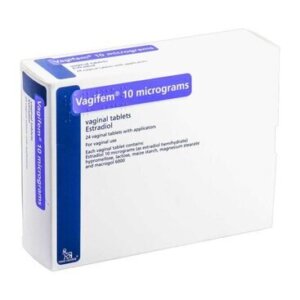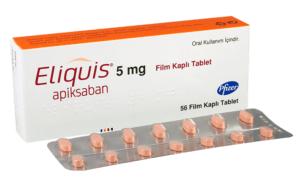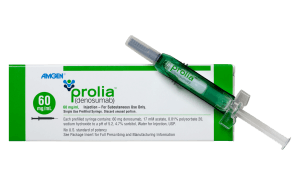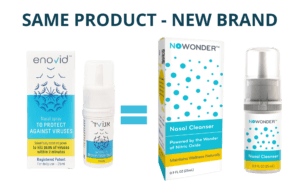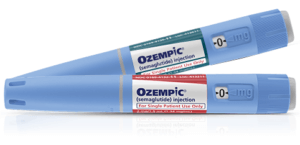 Since the beginning of 2024, there has been a wave of attention coming from major news media and health websites on the emergence of the COVID-19 variant JN.1 as the major form of the virus. Back at the beginning of December, we picked up on the fact that the CDC projected that the new JN.1 variant comprised an estimated 15%-29% of cases in the United States. It projected “that JN.1 will continue to increase as a proportion of SARS-CoV-2 genomic sequences. It is currently the fastest-growing variant in the United States.”
Since the beginning of 2024, there has been a wave of attention coming from major news media and health websites on the emergence of the COVID-19 variant JN.1 as the major form of the virus. Back at the beginning of December, we picked up on the fact that the CDC projected that the new JN.1 variant comprised an estimated 15%-29% of cases in the United States. It projected “that JN.1 will continue to increase as a proportion of SARS-CoV-2 genomic sequences. It is currently the fastest-growing variant in the United States.”
One month later, on January 5th, the CDC updated its figures and said the JN.1 variant accounts for about 62% of COVID cases in the US. On the same point, the New York Times reported on the 3rd of January this year that an epidemiologist at the Johns Hopkins Center for Health Security noticed that people weren’t yet shifting over to the recommended protective measures of mask-wearing and updated vaccines. “We have not even reached the peak yet for COVID-19…in the week that ended on Dec. 23, hospitalizations rose by nearly 17% from the previous week. There were about 29,000 new hospital admissions, compared with 39,000 the same week last year, while COVID claimed 1,263 lives per week in that week, compared to 3035 one year earlier.”
According to the World Health Organization website on December 21, 2023, variant JN.1 has now been declared a ‘standalone variant of interest’. Its characteristics include a high level of risk, as the variant is fast growing across all WHO regions with consistent SARS-CoV-2 sequence data sharing and has become the most prevalent variant in some countries. It also ranks as having a moderate level of risk regarding antibody escape, as it is estimated that JN.1 has increased immune evasion relative to its parent BA.2.86.
Is COVID-19 JN.1 different from previous variants?
As indicated by the published information from official sites like WHO and CDC, the effectiveness of existing vaccines against JN.1’s parent lineage (BA.2.86.1 descendant from variants XBB.1.5 and EG.5.1) appeared unchanged. JN.1 displays a higher immune evasion property. This will make the immunity granted by previous vaccines weaker.
The main symptoms of an infection by the JN.1 variant follow the same central pattern as the most recent prior variants, with one noted exception. In most cases, people who have been infected show several of the following symptoms:
- Runny nose
- Coughing
- Headaches
- Fatigue
- Muscle pain
- Sore throat
- Trouble sleeping
One symptom common to most of the previous variants is rarely reported: changes in taste and smell. Since many of these symptoms are shared with the common cold (influenza) or respiratory syntactical virus (RSV), especially in children, the final diagnosis should only be reached after the specific test that identifies SARS-CoV-2.
How well do existing COVID-19 vaccines work against JN.1?
JN.1 is so new that there are no published and peer-reviewed investigations of current vaccines’ effectiveness in fighting off infection by the new variant. One paper published towards the end of November 2023 on the bioRxiv.org website (part of Cold Spring Harbor Laboratory) concluded that administering an updated vaccine (monovalent mRNA vaccine XBB.1.5MV) to uninfected individuals boosted their serum virus-neutralization antibodies significantly not only against the older XBB.1.5 variant, but also against emerging viruses like HV.1, HK.3, JD.1.1, and JN.1. These findings strongly support the official recommendation to widely apply the updated COVID-19 vaccines to protect the public further. However, there is no current indication that the older vaccines will provide the same level of coverage as mRNA XBB.1.5MV. Also, the effectiveness of all vaccines dies off with the passage of time, and any vaccine administered more than a year ago will likely have minimal effect against JN.1 or the other newer forms of COVID-19.
What are the best options to avoid infection by the JN.1 variants of COVID-19?
Variant JN.1 carries the same risks and effects as the previous variants of COVID-19. This means that the same simple steps that worked in the past can keep the risk of infection to a minimum. The best way to avoid the dangers are:
- Get vaccinated with the latest version known to fight off all current variants. Older vaccines are not known to be effective against the newer variants, and once a vaccine has been administered, its shelf-life starts to decline, and protection levels will steadily fall unless the vaccine is regularly boosted.
- When moving around in close quarters with people who may carry the virus, even when they don’t experience symptoms, wear a mask.
- If you have to stay in close contact with people who you think may have an elevated risk of having been infected (for example, parents and caregivers, teachers, retail staff etc.), get into the habit of thoroughly washing your hands after touching the same surfaces as these visitors have.
- Guard yourself by using the simple Enovid antiviral nasal spray, which delivers a measured dose of nitric oxide, which is specifically designed to line the nasal passages and prevent inhaled virus spores from embedding and spreading. A single puff of the spray can give up to five hours of 99.9% protection against every variant of COVID-19.





